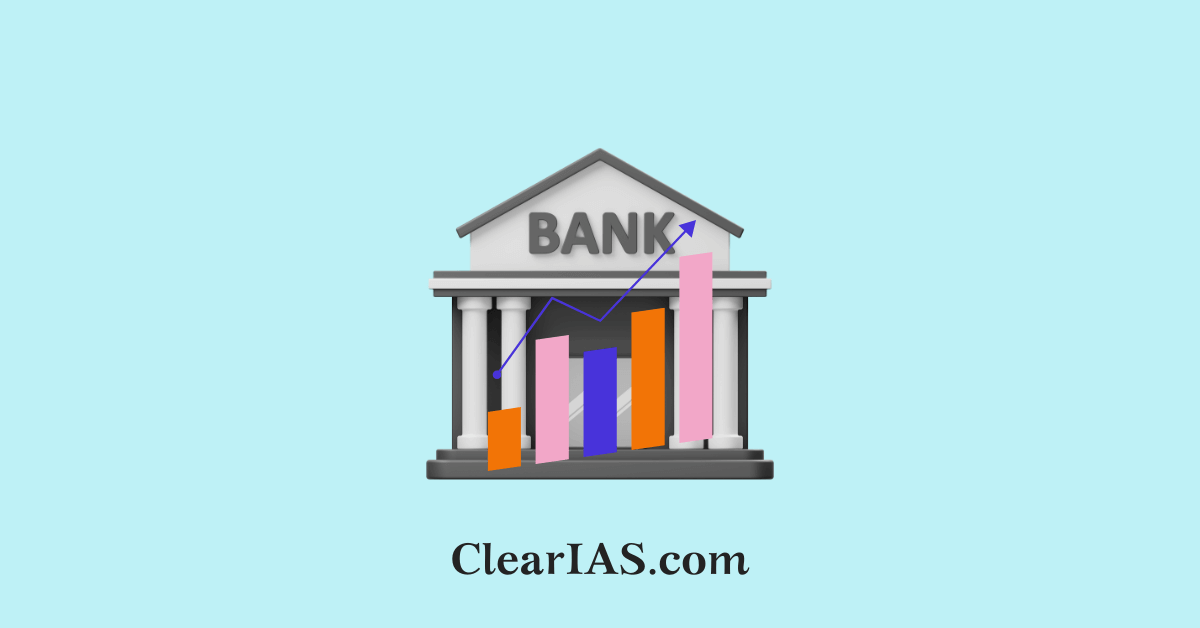
The report on Trends and Progress of Banking in India 2023-24 was released by the Reserve Bank of India (RBI). RBI released its annual report under the Banking Regulation Act, of 1949, highlighting the performance of the banking sector in 2023-24. Read here to learn more.
The Reserve Bank of India (RBI) has raised concerns about rising unsecured lending and private credit trends in its Trends and Progress of Banking in India 2023-24 report, underlining the opportunities and challenges in India’s financial ecosystem.
The report has also raised concern about rising banking fraud. It states that fraud cases surged to ₹21,367 crore during April-September 2024, up from ₹2,623 crore last year, threatening reputation, operations, and financial stability.
Key Highlights of Trends and Progress of Banking in India 2023-24 Report
- Decline in Non-Performing Assets (NPAs)
- Gross NPAs (GNPA): Reached a 13-year low of 7% (March 2024) and further improved to 2.5% (September 2024).
- Sector Performance:
- Retail loans: Lowest GNPA ratio at 2%.
- Agriculture loans: Highest GNPA ratio at 2%.
- Education loans: Significant improvement, with GNPA falling from 8% (March 2023) to 2.7% (September 2024).
- Bank Profitability
- Return on Assets (RoA): Rose to 4% (H1 of FY25).
- Return on Equity (RoE): Stood at 6% in FY24, marking six years of continuous profit growth.
- Unsecured Loans and Risks
- Rising Share: Unsecured loans constitute 3% of total credit (March 2024), down marginally from 25.5% (March 2023).
- Concerns: Minimal due diligence in top-up loans, potential misuse for speculative activities, and higher risk exposure.
- New Norms (Nov 2024): Increased risk weights and exposure limits for unsecured loans.
- Dark Patterns in Lending
- These unethical UI/UX practices manipulate borrowers into unfavourable terms.
- The Central Consumer Protection Authority (CCPA) has issued guidelines to address this.
- Employee Attrition
- Attrition Rates: Reached 25% over three years, raising concerns about operational risks and recruitment costs.
Scheduled Commercial Banks (SCBs)
- Credit Growth & Profitability: SCBs recorded improved profitability for the sixth consecutive year, supported by robust credit growth and better management practices.
- Improved Asset Quality: Gross Non-Performing Assets (GNPA) fell to a 13-year low of 5% as of September 2024, reflecting better asset quality and stringent recovery measures.
Strong Capital Position:
- Capital-to-Risk-Weighted Assets Ratio (CRAR):
- Stood at 16.8% in September 2024, surpassing the 9% minimum requirement mandated by the Reserve Bank of India (RBI).
- Also above the 8% requirement under BASEL-III norms.
- Indicates a strong capital buffer to absorb potential risks.
Urban Co-operative Banks (UCBs):
- Balance Sheet Expansion: UCBs continued to grow with sustained improvement in asset quality for the third consecutive year.
Non-Banking Financial Companies (NBFCs):
- Credit Growth: Achieved double-digit growth, reflecting increased demand for credit in retail and MSME sectors.
- Asset Quality: The GNPA ratio dropped to 3.4% by September 2024, indicating better financial health.
Technological Advancements in the Banking Sector
- Unified Lending Interface (ULI): Aims to simplify and expand credit delivery systems through seamless integration across lenders.
- Open Credit Enablement Network (OCEN): Enables efficient and inclusive credit access, particularly for small businesses and individuals.
Financial Inclusion
- The upcoming National Strategy for Financial Inclusion (NSFI) 2025-30 aims to:
- Deepen access to financial services for underserved populations.
- Address challenges posed by digital transformation and emerging financial risks.
Impact of Rising Unsecured Loans
- Financial Sector Risks
- Higher Default Rates: Potential increase in NPAs, straining banks and NBFCs.
- Consumer Debt Traps: Increased risk of financial instability for borrowers.
- Economic Pressures
- Inflation: Defaults and rising interest rates reduce disposable income and curb consumption.
- Growth Challenges: Financial stress in households may slow economic expansion.
- Rural-Urban Divide
- Both urban and rural areas face financial strain, with vulnerable sections disproportionately affected by high-interest loans.
Way Forward
- Tightened Lending Practices
- Use AI and data analytics for better credit risk assessment.
- Strengthen compliance with credit appraisal norms.
- Enhanced Consumer Protection
- Financial Literacy: Educate borrowers on loan terms and risks.
- Combat dark patterns through stricter regulations.
- Focus on Inflation Control: Balance interest rate policies to protect consumer spending power and ensure economic stability.
- Improved Regulatory Oversight: Regular audits and stress testing of loan portfolios to identify vulnerabilities early.
- Retention and Skill Development: Implement employee-friendly policies to address high attrition rates, ensuring better knowledge retention and operational efficiency.
Conclusion
While the banking sector shows strong growth in profitability and asset quality, the rise in unsecured loans and associated risks demands proactive measures. Balancing growth with financial stability requires tightened regulatory frameworks, enhanced consumer protection, and the integration of technology to improve credit risk management.
The performance of SCBs, UCBs, and NBFCs in 2024 reflects the resilience of India’s financial sector, bolstered by technological innovation and regulatory oversight. The focus on financial inclusion and robust credit mechanisms positions the sector for sustainable growth while addressing structural challenges.
Frequently Asked Questions (FAQs)
Q. What are Unsecured Loans?
Ans: An Unsecured Loan is a loan that does not require you to provide any collateral to avail them. It is issued to you by the lender on your creditworthiness as a borrower. Hence, having an excellent credit score is a prerequisite for the approval of an Unsecured Loan.
Q. What is the difference between secured and unsecured lending?
Ans: Secured loans require some sort of collateral, such as a car, a home, or another valuable asset, that the lender can seize if the borrower defaults on the loan. Unsecured loans require no collateral but do require that the borrower be sufficiently creditworthy in the lender’s eyes.
Q. What is a private credit loan?
Ans: Private credit is where a non-bank lender provides loans to companies, typically to small and medium-sized enterprises that are non-investment grade. Private credit can serve as a diversifier in a private market’s portfolio as debt is less correlated with equity markets.
Related articles:
-Article by Swathi Satish





Leave a Reply